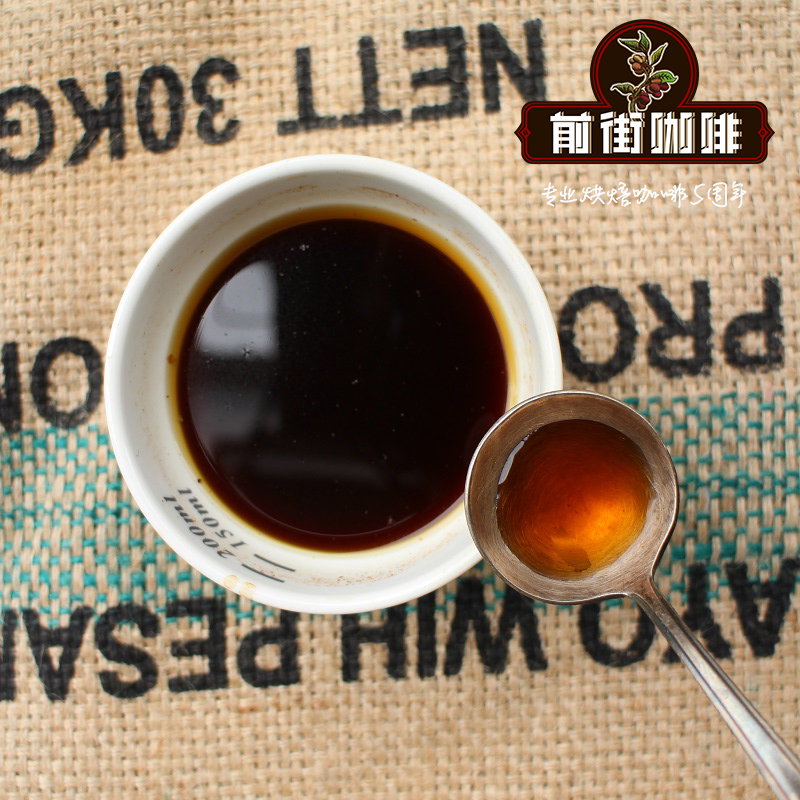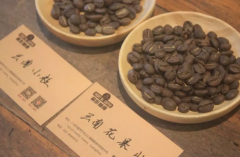Mexican coffee practice Mexican Chiapas coffee beans taste description and cooking suggestion

Professional coffee knowledge exchange more coffee bean information please follow the coffee workshop (Wechat official account cafe_style)
Mexico is located at the northern end of Central America, the uppermost edge of the coffee production belt, the coffee producing areas of coatepec (Cortepe) and veracruz (Veracruz) in the north, the Pluma coffee in the Oaxac (Oaxaca) region in the middle, and the Chiapas (Chiapas) Highlands on the southern border with the Malavitte fruit producing region in Guatemala.
The vast majority of Mexican coffee is washed Arabica coffee, which is characterized by a very strong special aroma, a bit like overfermented fruit. The southernmost Chiapas (Chiapas) round beans in Mexico have a mild and delicate taste and a very special aroma.
Chiapas is located in the southernmost part of Mexico, the coffee beans bred by the high altitude of 2500m to 4000m and fertile volcanic soil have a smooth taste and moderate acidity, and have won the UTZ "good Coffee Certification". The palate is mild and full of fine aromas, with mild acidity on the palate, creamy silky and smooth, with a finish of drupes, nuts and spices.
Mexico is one of the largest producers of organic certified coffee. OPCAAC (Organic small Farmers' production Organization) was founded in 1995, which constructs a farm management system, emphasizes the open and transparent independent production and marketing information of coffee farmers, and sets standards to avoid over-exploitation of land. OPCAAC aims to create the value of the local coffee industry and improve the quality of life of local farmers through fair trade and eco-friendly agricultural production.
OPCAAC members use environmentally friendly farming methods to reclaim land, establish sustainable economic and social management and improve the quality of their products through the development of regional organizations.
Mexican coffee planting area of 680,981 hectares, distributed in more than 4300 communities in 12 states of the Republic of Mexico, the soil is slightly acidic. The main producing areas are Chiapas, Veracruz, Puebla and Oaxaca, and the main varieties are Typica, Caturra, Bourbon, Catuai, Mundo Novo, Garnica, Catimor, Maragogype and Robusta. Recently, great progress has been made in the coffee industry with the introduction of rust-resistant varieties, such as Marsellesa,Costa Rica 95 and some hybrid varieties developed by the French CIRAD and ECOM groups in the unique cloning laboratory in Mexico.
Chiapas, which extends to the Guatemalan border, is by far the largest production area, accounting for 1/3 of total production. Veracruz mainly produces low-altitude coffee.
Cooking suggestions:
Powder / water ratio 1:15, water temperature 91 °, medium grinding thick and thin kono filter cup
Stew with 30g water for 30s, the second stage water injection to 120g water cut off, when the water level is about to expose the powder bed, then water injection to 220g, extraction time to 2 minutes immediately remove the filter cup, not at the end.
Flavor characteristics: moderate consistency, mild but sweet flavor, with a little cocoa nut aroma, wet aroma with obvious honey-like sweetness, and walnut, almond aroma, the most obvious taste is sucrose-like flavor, if the baking degree is not deep, you can also feel a light lemon flavor, the tail is mild but slightly short, is a light. Sweet, approachable coffee.
Important Notice :
前街咖啡 FrontStreet Coffee has moved to new addredd:
FrontStreet Coffee Address: 315,Donghua East Road,GuangZhou
Tel:020 38364473
- Prev

Description of Ethiopian washed Sidamo lemon nectar / jasmine flavor
Professional coffee knowledge exchange more coffee bean information please follow the coffee workshop (Wechat official account cafe_style) lemons, flowers (jasmine, coffee, wild ginger, gardenia, etc.), honey is the most classic flavor elements of washed Ethiopian boutique coffee. I still remember that more than a decade ago, when the race wind was in vogue, a pot of water washed the fragrance of lemon and nectar left by Ethiopia in the upper pot.
- Next

What is the difference between Yunnan iron pickup and Katim's flavor? what are the varieties of Yunnan coffee beans?
Professional coffee knowledge exchange more coffee bean information Please follow the coffee workshop (Wechat official account cafe_style) is often asked by guests, the Yunnan Huaguo Mountain and Yunnan Xiaozhi in your store are from Yunnan, what's the difference between them? So Qianjie Coffee would like to share these two beans with you today. Let's see what is the difference between them.
Related
- Detailed explanation of Jadeite planting Land in Panamanian Jadeite Manor introduction to the grading system of Jadeite competitive bidding, Red bid, Green bid and Rose Summer
- Story of Coffee planting in Brenka region of Costa Rica Stonehenge Manor anaerobic heavy honey treatment of flavor mouth
- What's on the barrel of Blue Mountain Coffee beans?
- Can American coffee also pull flowers? How to use hot American style to pull out a good-looking pattern?
- Can you make a cold extract with coffee beans? What is the right proportion for cold-extracted coffee formula?
- Indonesian PWN Gold Mandrine Coffee Origin Features Flavor How to Chong? Mandolin coffee is American.
- A brief introduction to the flavor characteristics of Brazilian yellow bourbon coffee beans
- What is the effect of different water quality on the flavor of cold-extracted coffee? What kind of water is best for brewing coffee?
- Why do you think of Rose Summer whenever you mention Panamanian coffee?
- Introduction to the characteristics of authentic blue mountain coffee bean producing areas? What is the CIB Coffee Authority in Jamaica?

